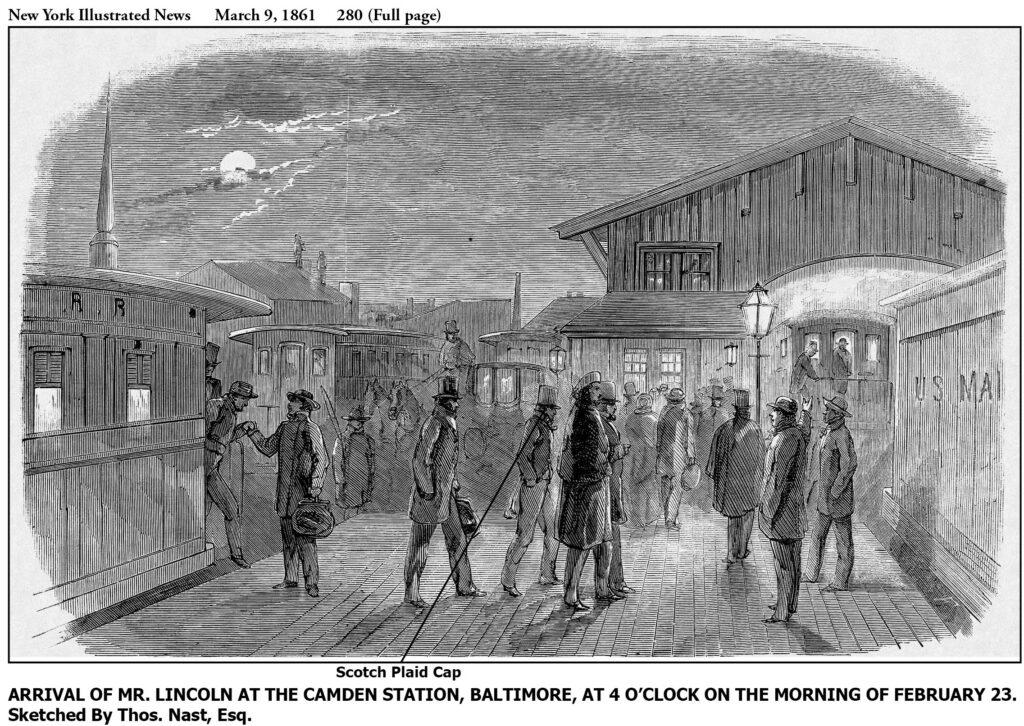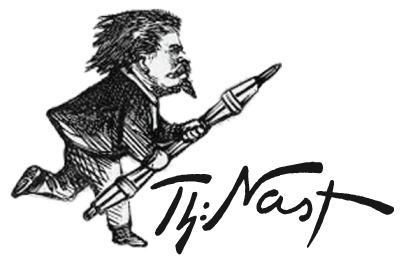
New York Illustrated News – March 9, 1861
After Philadelphia, the next scheduled stops for Lincoln’s train were Harrisburg and Baltimore. While in Philadelphia, Lincoln received word from two different credible sources that there was a plot to kill him in Baltimore the next day. The plan was to create a disturbance in the Baltimore station to distract the police, and then kill Lincoln with a knife or gun. Alternatively, there was talk of plans to blast the train off its track with explosives.
Lincoln decided to keep his date in Harrisburg, but to leave incognito after dinner. Detective Allan Pinkerton arranged for a special locomotive and coach to take Lincoln back to Philadelphia, accompanied by his friend and bodyguard, Ward Lamon. From there, he caught a train to Baltimore, arriving at 3:30 A.M. at the President Street station. Lincoln then travelled by carriage to Baltimore’s other station a few miles away at Camden Yards, where he caught a 4:15 train to Washington. He arrived unrecognized at six Saturday morning, and went directly to the Presidential Suite at the Willard Hotel.
The reporters on Lincoln’s train were caught flat-footed by the change from his written itinerary. One of them, Joseph Howard, Jr. of the New York Times, concocted a story that Lincoln had disguised himself in a Scotch plaid cap and a long military cloak. Effectively, Howard used his Times credentials to create a fable which was publicized by all the daily and illustrated weekly papers. Lincoln was derided for deviousness and even cowardice, and caricatured mercilessly.
Thomas Nast was the only artist or reporter who depicted Lincoln without the Scotch cap and cloak. He went over all the details with the station master at Camden Yards depot. He drew Lincoln in his standard top hat, but his editors changed that to a plaid cap. (In actuality, Lincoln was wearing an old overcoat and a soft wool hat; the plaid cap and long military coat never existed outside the rumor mill.)
